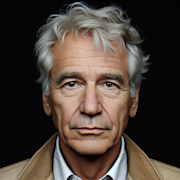Gone With The Wind (1939)

Released: 1939
Directed by: Victor Fleming
Starring: Clark Gable, Vivien Leigh, Olivia de Havilland
Introduction
Considered a timeless classic, Gone With The Wind is a 1939 epic historical romance film directed by Victor Fleming. Based on the Pulitzer Prize-winning novel by Margaret Mitchell, the movie tells the captivating story of Scarlett O’Hara, a strong-willed Southern belle during the American Civil War and Reconstruction era. I’ll delve into the film’s incredible production, memorable performances, and its enduring impact on popular culture.
Masterful Production
The Scope of the Film
Gone With The Wind stands out for its grandeur and scope. The film encompasses a vast narrative, spanning the Civil War and the Reconstruction era, which required meticulous attention to detail for historical accuracy. The production team left no stone unturned, striving for realism and authenticity.
Stunning Visuals and Cinematography
From sweeping vistas of the plantation lands to the breathtaking costumes, Gone With The Wind is a visual spectacle. The film showcases mesmerizing shots, such as the iconic scene of Scarlett surrounded by the ruins of Atlanta or the vivid green of Tara plantation. The cinematography, coupled with the use of Technicolor, brings Mitchell’s novel to life, making every moment visually captivating.
Groundbreaking Techniques
Gone With The Wind introduced innovative techniques that pushed the boundaries of filmmaking at the time. The film utilizes the “Technicolor three-strip” process, which enriched its color palette and contributed to its visual impact. Additionally, the film utilized intricate matte paintings to create realistic backdrops like those of Atlanta, further immersing viewers in the story.
Memorable Performances
Vivien Leigh as Scarlett O’Hara
Vivien Leigh’s portrayal of Scarlett O’Hara remains one of the most iconic performances in film history. Leigh skillfully portrays Scarlett as a complex character, showcasing her resilience, determination, and vulnerability. Her ability to captivate audiences while navigating a wide range of emotions throughout the film is truly remarkable. Leigh’s powerful performance earned her a well-deserved Academy Award for Best Actress.
Clark Gable as Rhett Butler
Clark Gable’s portrayal of the dashing Rhett Butler adds an undeniable charm to the film. Gable effortlessly embodies the character’s charisma, wit, and occasional roguishness. His on-screen chemistry with Vivien Leigh creates a captivating dynamic, making their scenes together some of the film’s most memorable.
Supporting Cast
The film boasts a strong supporting cast, including Olivia de Havilland as the kind and gentle Melanie Hamilton, and Hattie McDaniel as Mammy, Scarlett’s loyal confidante. These performances add depth and nuance to the story, complementing the central characters and contributing to the film’s overall excellence.
Enduring Impact
Cultural Significance
Since its release, Gone With The Wind has had a profound impact on American cinema and popular culture. The film broke new ground in terms of production values and storytelling, setting a benchmark for future epics. It touched upon themes of love, loss, and resilience, resonating with audiences across generations. Its enduring popularity is reflected in its numerous award wins, including 10 Academy Awards.
Historical Representation
While the film holds immense cinematic value, it is essential to acknowledge the criticism surrounding its historical representation. Some argue that Gone With The Wind romanticizes the old South and fails to address the complexities of racial dynamics during that era adequately. This aspect warrants a thoughtful examination and discussion alongside the film’s positive attributes.
Continued Legacy
Despite the ongoing debate, Gone With The Wind leaves an indelible mark on the film industry. It remains a vital part of cinema history, inspiring countless filmmakers and artists. Decades later, the film continues to captivate audiences and reigns as a beloved classic.
Conclusion
Gone With The Wind has withstood the test of time due to its masterful production, memorable performances, and enduring impact on popular culture. The film’s larger-than-life storytelling and stunning visuals immerse viewers in its rich narrative. Criticisms aside, this timeless classic remains an essential piece of cinematic history that continues to captivate audiences and serve as a reference point for epic storytelling.

Desmond van der Walt
Journalist
More From Classics Authority Movies

Movie
Fight Club (1999)

Movie
Manchester by the Sea (2016)

Movie
The Magnificent World of Classic Epics: Tales of Heroes and Legends

Movie
The Wizard of Oz (1939)

Movie
Modern Times (1936)

Movie
The Power of Music: Classic Film Scores That Defined an Era





